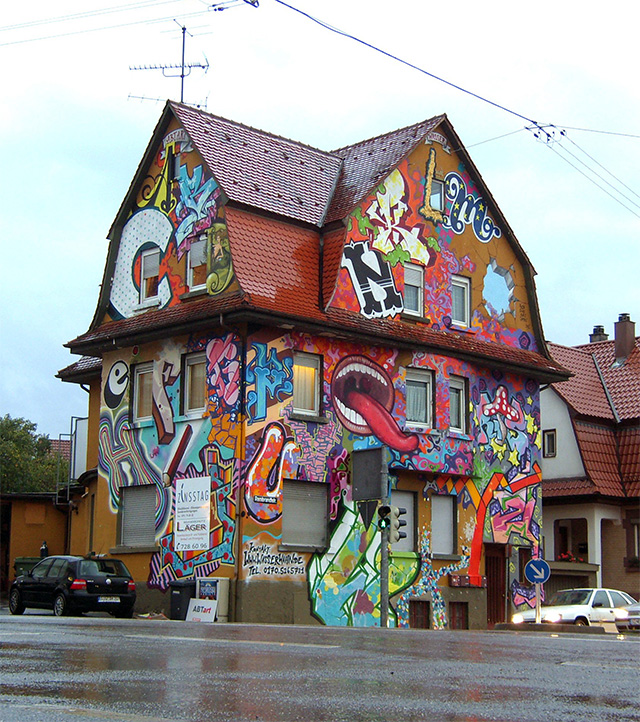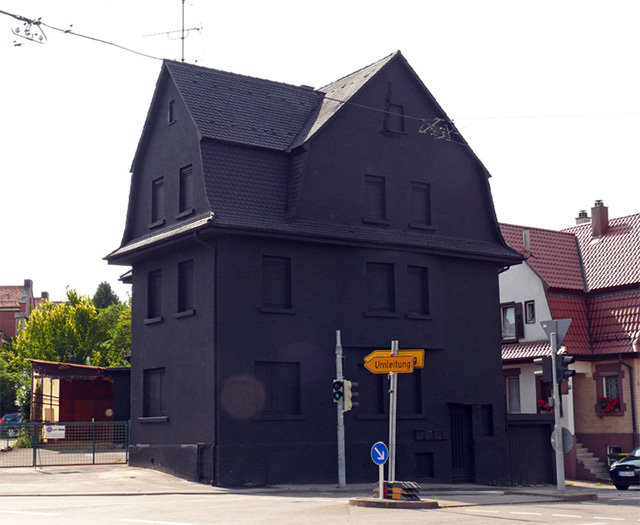The Haus in Schwarz (House in Black) is a distinguished public artwork that has woven its way into the rich tapestry of German contemporary art. Erected in 2008, it was a distinct collaboration between two visionary artists, Erik Sturm and Simon Jung. This artistic installation was not just another real estate development in the scenic town of Möhringen in Germany; instead, it was a whimsical venture driven by creative energy and an innate desire to inspire dialogue among the artistic community and lay public alike.

The Haus in Schwarz was a single standing residential house situated in Möhringen on the outskirts of Tübingen. Before its transformation into a profound art installation, the house was destined for demolition and set to pave the way for new construction projects. But it was given a new breath of life when the two artists, Sturm and Jung, chose to turn it into an exciting canvas of their creativity.

What set this project apart was its unique concept. In Sturm and Jung’s gifted hands, this ordinary house was coated entirely in black – from the exterior walls and roof to the windowpanes, doors, and even the garden surrounding the house. Everything within sight was meticulously painted black, creating a surreal, monolithic appearance that immediately captured attention and created a haunting atmosphere. The blackened house stood in stark contrast to its colorful, bustling neighborhood, immediately becoming a vivid symbol of what was to come.

Looking beyond the shock value of its visuals, the message behind the Haus in Schwarz is even more profound. The pure black paint symbolizes the impending death of the old house, a concept that resonates poignantly with the realities of urban development and gentrification. It signifies the end of an era, a farewell to the past, and the onset of change.

This art piece didn’t just appeal to a specific group of art connoisseurs; it appealed to every passerby, provoking thought and encouraging conversation about urbanization and the fast-changing landscapes of our cities. It stood as an embodiment of the temporary nature of human constructs, the relentless march of progress, and the inevitable loss that comes with it.

